Have you ever marveled at the grace and beauty of a heron as it glides through the sky or expertly plucks its next meal from the water?
Texas is home to a diverse array of these magnificent birds, with 12 different species making their home in the Lone Star State.
From the towering Great Blue Heron to the tiny Green Heron, each species brings its own unique charm to the Texas skies.
So join us as we explore the captivating world of Texas herons and discover the fascinating traits and behaviors that make each species truly one of a kind.
| Image | Name |
|---|---|
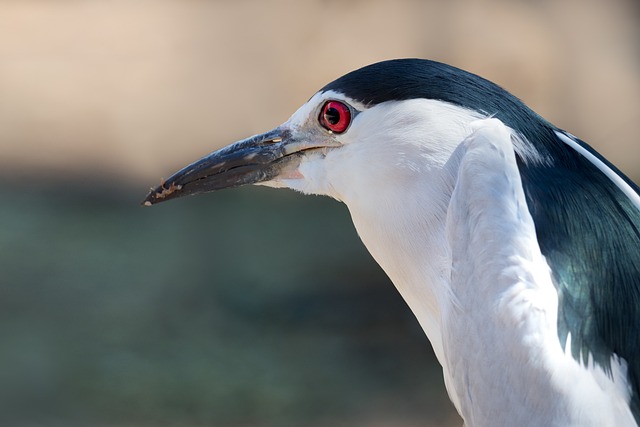 | Black-Crowned Night Heron |
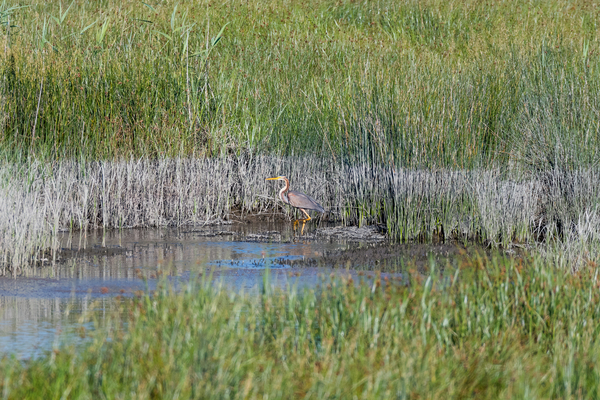 | Reddish Egret |
 | Great Blue Heron |
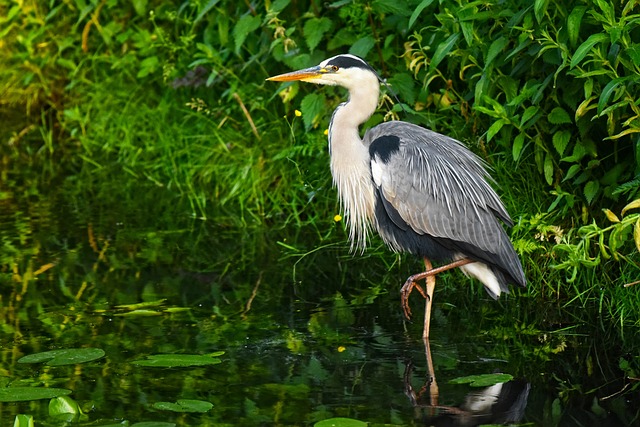 | Green Heron |
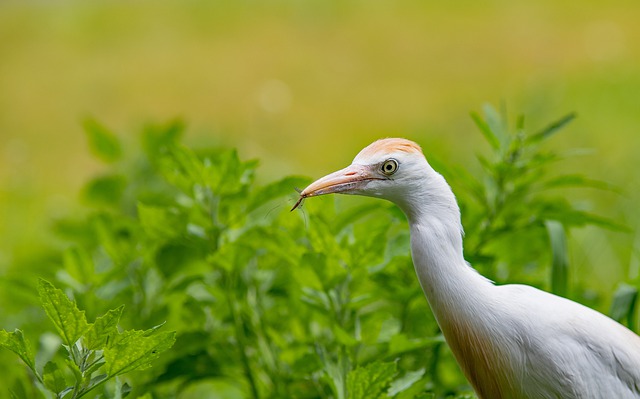 | Cattle Egret |
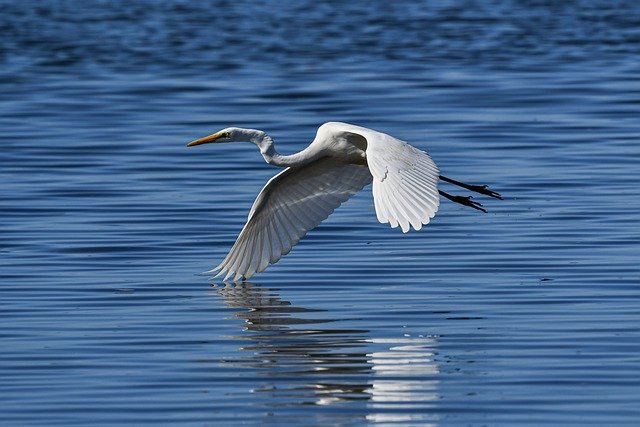 | Great Egret |
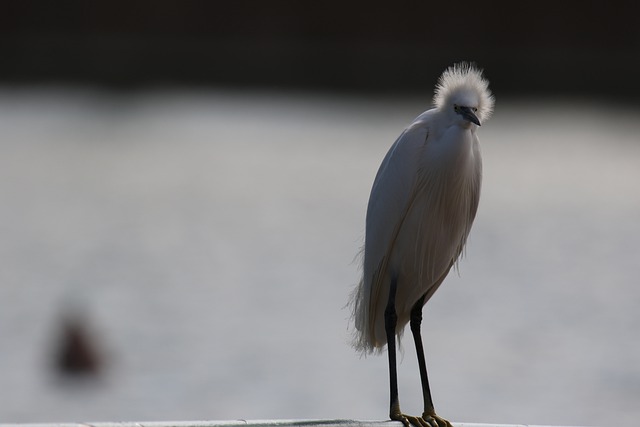 | Snowy Egret |
 | Least Bittern |
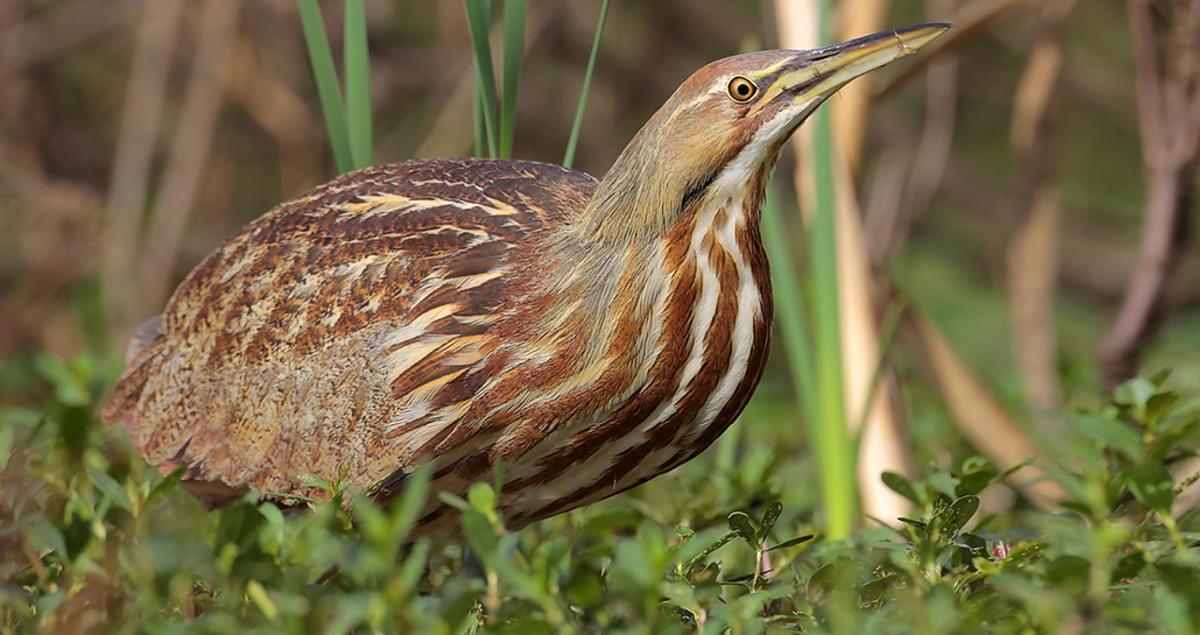 | American Bittern |
 | Yellow-Crowned Night Heron |
 | Tricolored Heron |
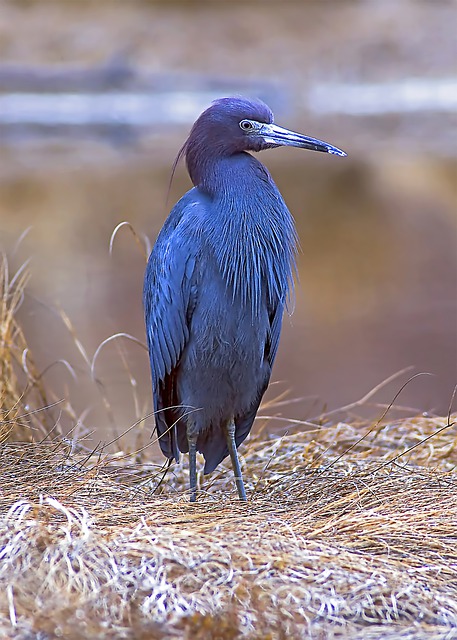 | Little Blue Heron |
Types of Herons in Texas
1. Black-Crowned Night Heron

The head and back of this heron are black, while the rest of its body is light grey.
The way it stands slumped over at the water’s edge gives the impression that it is less aggressive than the great blue heron and almost uninterested in its surroundings.
These birds are active at nightfall and begin eating in the dark, as their name indicates; you will frequently hear their loud barking sounds as they fly above in the darkness.
The black-crowned night heron is a resident of Texas and may be seen throughout the year, most often along the Gulf Coast.
Nevertheless, at the time of year when they are reproducing, there is a possibility of seeing them in the Panhandle.
They sleep on the branches of trees that are located close to watery environments such as marshes, seashores, rivers, and swamps.
The night heron consumes insects, fish, frogs, rodents, squid, and carrion for food.
On occasion, it may also consume birds’ eggs and nestlings, which can cause difficulties for colonies.
2. Reddish Egret

The reddish egret possesses a long neck and long legs, and its feathers are a variety of different colors.
It has a reddish-brown color on its neck and head, while the rest of its body is a dark grey color.
This particular bird, however, comes in two different color morphs; the other variant is completely white.
It also has a multicolored beak, which starts off blue around the eyes and then transitions to pink, black, and purple farther down.
This particular heron may be seen across Texas along the coastline during the whole year.
This type of heron enjoys saltwater unlike any other heron, and you’ll commonly find it in the state of Texas on islands that are covered with scrub.
Additionally, it calls lagoons, salt marshes, and tidal flats along the coast home.
When it comes time to eat, this particular bird is rather energetic, as it dashes through the shallow water and leaps into the air to spearfish, which is its major source of nutrition.
3. Great Blue Heron

With lengthy legs, a neck in the form of an “S,” and a bushy look, the Great Blue Heron is among the biggest and most frequent species of heron Across North America.
The majority of their bodies are a bluish-gray tint, and a thick black stripe runs across their eyes.
A large and extensive population of this heron may be found in the state of Texas, with substantial concentrations seen across Eastern and Central Texas along the coast.
Although it is linked with water, the great blue heron may be found living in a variety of environments, including meadows, estuaries, swamps, marshes, seashores, and even constructed habitats such as reservoirs.
It is a resident of Texas during the whole year and may often be seen either standing still in water bodies or soaring slowly through the air over the state.
Their habitats and diets are quite diverse, and they are able to adapt rapidly in order to flourish in any given geographical region.
They take the majority of their food in the form of fish, although they will also eat snakes, turtles, salamanders, frogs, and some other birds.
4. Green Heron

The back of the green heron appears iridescent and bluish-green, and it has plumage that seems like a mohawk on top of its head. Its neck is a red-brown color.
The Little Blue Heron is a smaller species of heron that lives in isolated environments surrounding smaller lakes and ponds that have dense vegetation.
During the mating season, this species may be found on the Gulf Coast and in some sections of Eastern and Central Texas.
It is known to be a year-round resident of these areas.
When it detects the presence of a person, this bird has a tendency to twitch its tail in a worried manner.
As it flies by you, emitting a piercing “sky!” cry, you might be able to hear it before you really see it.
During the mating season, you will most often only observe the green heron in tiny, distinct groups or couples rather than in vast flocks.
They, like most other herons, mostly consume frogs, crabs, fish, aquatic animals, and insects.
5. Cattle Egret

The cattle egret has an extensive range and is known for its strong migratory behavior.
It is possible to see it across the eastern and southern regions of the state during the mating season, although it spends the whole year living on the Gulf Coast.
In addition, it is not uncommon for them to travel across the remainder of the state, most often via the Panhandle and the western parts.
This bird is entirely white, with the exception of yellow spots that may be seen on its head, chest, and back.
This species of egret and heron loves to hunt for insects in wide fields, in contrast to the majority of other herons and egrets.
It will accompany cattle or even other pasture livestock and wait until they bring insects into view, especially crickets and grasshoppers.
Crickets and grasshoppers are their preferred prey.
The cow egret is a common sight in pastures, fields, and other open areas of the countryside when there is grazing livestock nearby.
6. Great Egret

The Great Egret is a large snowy-white heron that has brilliant green rings around its eyes.
It is around six feet tall. It is most comfortable doing so in calm water in the southern states, particularly in areas close to the shore.
This magnificent bird may be seen throughout the year in the area close to the Gulf Coast and across the eastern part of the state when it is nesting season.
During the winter, if you are close to the border of Mexico, there is a chance that you may see a great egret.
The majority of their diet consists of fish, and they search for food close to the shores of coastal lagoons, lakes, and marshland.
It is possible for them to be found in flocks close to the water’s edge or on their own next to livestock in fields.
On the other hand, it is also known to go into open regions in search of grasshoppers, rodents, and even birds of a smaller size.
7. Snowy Egret

This beautiful little heron is entirely white, with the exception of a brilliant yellow spot that sits just below its eyes.
Its shrill squeaks and choking croaks disrupt its otherwise elegant aspect in an unpleasant and uncomfortable way.
It eagerly searches for food in the shallower sections of the water as its bright yellow feet bounce above the surface of the water.
During the mating season, you may find this heron in the extreme eastern side of the state, close to the Louisiana border.
However, it spends the whole year along the Gulf Coast region.
It calls habitats such as swamps, wetlands, shorelines, and beaches in both saltwater and freshwater environments home.
It hunts its prey, which includes frogs, insects, fish, crabs, rodents, snakes, and lizards while walking or running in shallow water.
8. Least Bittern
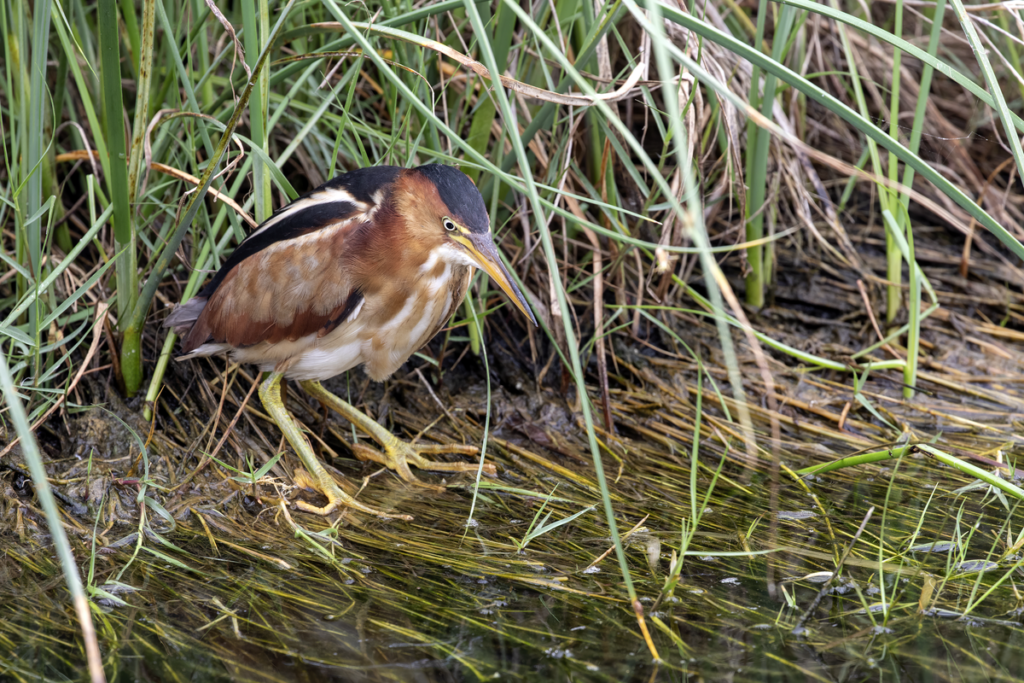
Because of its diminutive size and the thick foliage that characterizes its natural habitat in marshes, the least bittern is among the tiniest herons in the world.
It has a black crown and back, a yellow beak, and a white underbelly, and its coloring ranges from light to medium brown.
Even though this species does not spend the whole year in Texas, during the mating season, you may locate it along the Gulf Coast and in the easternmost part of the state.
They also cross the central and western parts of Texas on their way to the Panhandle.
Nevertheless, since they fly at night, it might be difficult to see them.
They are most often seen in fresh marshes that have tall and thick vegetation, where they may be seen clinging to the reeds and poking their beaks into the water.
Minnows, tiny snakes, and tadpoles make up the bulk of their diet, which is not dissimilar to that of other herons despite the fact that these herons are smaller.
9. American Bittern

The American bittern does have a streaky brown appearance with varied hues of brown, white on its underside, and yellow behind its eyes.
It is a migrating bird specie, and there are just a few locations over the West Coast where it remains for the whole year.
During the winter months within Texas, you may see this heron along the Gulf Coast; but during migration, it can be found all throughout the state.
This huge bird lives alone and chooses to make its home in expansive freshwater marshes, with the exception of the winter months, when it sometimes makes its home in the saline water of coastal wetland habitats.
Crabs, insects, frogs, snakes, catfish, and eels all make up part of this animal’s diet.
It remains still as it waits for its food near the water’s edge, and then all of a sudden, it pushes its bill through into the water in order to capture its meal of aquatic vegetation.
10. Yellow-Crowned Night Heron

The yellow-crowned night heron appears completely black or grey in color, with the exception of the white stripes that run down the sides of its face and the bright yellow tufts of hair that are located on its forehead.
This lonely bird spends most of its time at the extreme southern point of Texas, but during the mating season, it moves to the extreme eastern side of the state, close to Louisiana.
It is most at home in bayous, mangrove forests, cypress swamps, and other areas with shallow tidal waterways, where it may hunt for food by gently wading through the water while keeping its head above water.
Crustaceans, such as crayfish and crabs, make up the majority of this heron’s diet.
It has a more selective diet than other herons. It was given the moniker “crab eater” when it was brought to Bermuda with the goal of controlling the island’s population of land crabs.
11. Tricolored Heron

The top of the tricolored heron is a dark purple hue, while the bottom is either white or a light grey tint.
It also has yellow legs and an orange beak.
This species of heron may be seen all year long along the Texas coastline close to marshes, coastlines, and swamps; when observed, it is often submerged up to its chest in the water of coastal lagoons.
This thin bird possesses long legs and is normally social while nesting but feeds alone when it is not breeding.
The majority of its diet consists of crustaceans, insects, and fish, and it maintains tiny feeding areas as it slowly moves through shallow water.
12. Little Blue Heron

It is more accurate to compare the small blue heron to an egret than to the big blue heron.
This juvenile heron is mostly dark blue, with a pale blue beak and legs that have a bluish-green tint to them.
Along the coast of Texas, you may locate this species throughout the year, and in the extreme east, near Louisiana, you can discover it during the mating season.
The small blue heron is a very quiet bird that only makes a squawking sound when it is startled.
It builds its nest in trees or thickets close to water bodies such as ponds, wetlands, swamps, and rice fields and then spends its days slowly foraging for food in the water or on nearby beaches.
It consumes a wide variety of foods, including snakes, frogs, crabs, fish, spiders, lizards, and insects, among other things.
Conclusion
In conclusion, Texas is a hotbed of heron diversity, with 12 distinct species calling the state home.
From the majestic Great Blue Heron to the cunning Green Heron, each species brings its own unique beauty and charm to the Texas skies.
Whether you’re an avid birder or simply appreciate the grace and elegance of these magnificent birds, a trip to Texas is sure to be a memorable one.
So make sure to bring your binoculars and keep an eye out for these incredible creatures as you explore the Lone Star State.
FAQ
How many types of herons are there in Texas?
Texas is home to 12 different species of herons, including the Great Blue Heron, Green Heron, and Snowy Egret.
Where can I see herons in Texas?
Herons can be found near bodies of water such as lakes, rivers, and coastal areas. Popular bird-watching locations in Texas include Galveston Bay, Padre Island National Seashore, and the Houston Arboretum and Nature Center.
What are the key differences between the different types of herons in Texas?
The 12 species of herons in Texas vary in size, coloration, and behavior. For example, the Great Blue Heron is the largest of the herons in Texas and has a distinctive blue-gray plumage, while the Green Heron is much smaller and has a greenish-brown plumage.
Are herons in Texas threatened or endangered?
Some species of herons in Texas are considered to be of concern due to habitat loss and degradation, and others are listed as threatened or endangered by the state or federal government. Conservation efforts are underway to protect these birds and their habitats.
Last Updated on March 22, 2023 by Lily Aldrin
